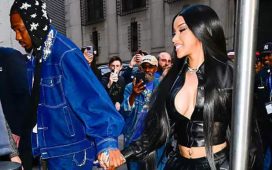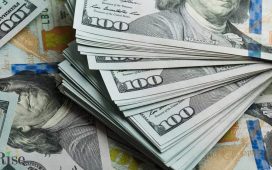A customer carries merchandise from a Hermes store on Feb. 14, 2025.
Scott Olson | Getty Images
Europe’s beloved luxury brands may be largely sheltered from the initial effects of sweeping U.S. tariffs, but the risks of a wider economic downturn spell bad news for the sector’s long-awaited recovery.
Shares of European luxury stocks LVMH, Richemont, Kering and Hermes were among those to slip lower Wednesday as levies on U.S. imports from the European Union took hold. The outlook remains unclear, even as President Trump later announced a 90 day pause and reduced rates to 10% universal tariffs.
High-end fashion houses — for whom the made-in-Europe label is part of the allure — are less likely than other firms to bow to President Donald Trump’s ultimate demand to relocate manufacturing to the U.S., instead indicating that they will pass on increased import costs to consumers.
Yet a broader slump in the global economy could make those hikes tougher to bear, even for wealthy shoppers, who are typically better able to absorb price shocks, analysts have warned.
Odds of a U.S. and global recession this year climbed to 60% following Trump’s “Liberation Day” tariff announcement, according to JPMorgan, with CEO Jamie Dimon saying Wednesday that the resultant market turmoil had made a recession “likely.”
“Weaker global stock markets and the broader economic uncertainty will weigh on confidence and we see this further postponing a recovery in luxury demand,” Adam Cochrane, general retail and luxury equity research analyst at Deutsche Bank, wrote in a note Wednesday.
Luca Solca, senior analyst for global luxury goods at Bernstein, echoed that sentiment, dubbing the first round effect of U.S. tariffs as “negligible” but citing notable knock-on effects.
“What we should worry about, in case, are the second and third level impacts of the new American policies, if they precipitate a sharp global recession and stock market correction,” Solca wrote in a note last week.
European luxury companies broadly generate a relatively minimal 15% to 30% of sales from the Americas as a whole, according to Bernstein estimates. Nevertheless, the U.S. market has become an important growth driver in recent quarters as firms have shifted their focus amid waning China sales. Meanwhile, already subdued Chinese demand could be further hit by 125% U.S. tariffs, effective Wednesday.
It comes as upbeat fourth-quarter results from high-end fashion groups had pointed to a turnaround in the sector, which has suffered from a post-Covid slowdown and soft consumer spending. However, Deutsche Bank said Wednesday that rebound could be “the anomaly and not the trend.”
“It is no longer clear that 3Q24 was the nadir for luxury demand,” Cochrane wrote, noting the bank had lowered its 2025 luxury sector growth expectations on a constant currency basis by 3 percentage points to 2%.
Citi agreed, writing Tuesday that the “worse-than-feared” U.S. tariff announcement and strong market sell-off represent “a significant threat to the future of U.S. luxury demand.”
Among the brands best positioned to weather the storm, according to the analysts, are Hermes and Burberry while companies such as Richemont and Moncler could be harder hit.










